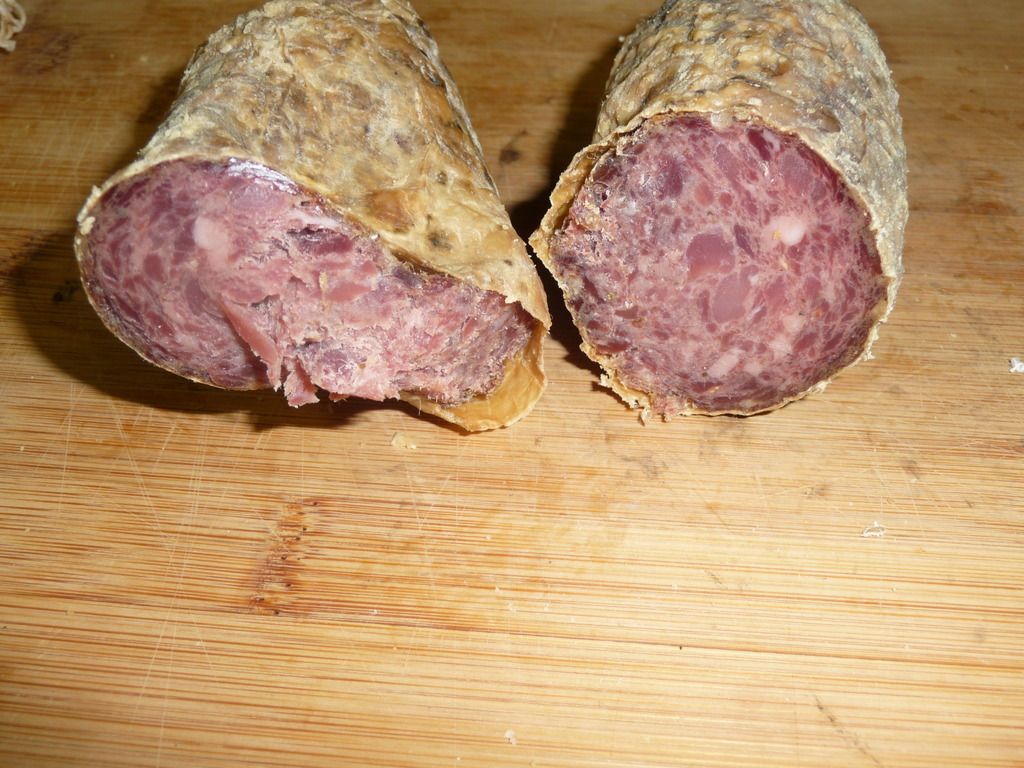Saucisson sec de cheval (I'm so hungry I could eat a horse!)
Posted: Wed Jul 01, 2015 08:49
I'm so hungry I could eat a horse!
We hear that often but very few people, given the opportunity, would actually eat horse meat, even if they were seriously hungry! I really have no qualms about eating horse meat but have eaten it only a few times in my lengthy carnivorous life time. Many decades ago when I spent a year in Europe on an exchange scholarship, I had steak tartare at a restaurant made from horse meat filet. The waiter explained that it was as close to the original as possible since it was invented by the Tartars who not only rode horses but also ate them. Vodka flowed freely that night so I don't remember the taste. Then, somewhere along the way, I also had an Italian horse meat stew and three years ago my father made a Polish sausage for a friend that was 50/50 horse and pork. It was fabulous! But what has made the greatest impression, and has continually simmered in the back of my mind for the past decade is a saucisson sec de cheval that I tasted in French Catalonia. There was outdoor market in each town and village once a week and vendors would travel back and forth with their products. The butchers operated out of refrigerated trucks and there were always several varieties of dried sausages available, including those made from horses and donkeys. At the time I was not interested in making dry sausages and knew nothing about the process. But I was beginning to appreciate and like the Southern European dry cured sausages and found the idea of horse dried horse sausage quite intriguing. And finally now I got around to making my own version of saucisson sec de cheval .
A couple of weeks ago I sourced some horse meat from Montreal, paying double what an expensive cut of beef would cost. Actually the cost shocked me, so I hope it's worth the effort. The saucisson contains 50% horse meat from the loin and rump, 30% lean Class I pork (no connective tissue or fat) from the ham and butt, and 20% back fat. And there is another first here for me since I used Safepro® B-LC-007. Chr. Hansen markets this starter culture as the bacteria "with the license to kill", as it is apparently effective in eliminating listeria. I made a total of 6kg, all but one cased in beef middles. The saucisson has now finished the fermentation stage and is currently in my curing chamber. One chub was cased in the Umai 50mm salami tube and hung in my utility fridge.
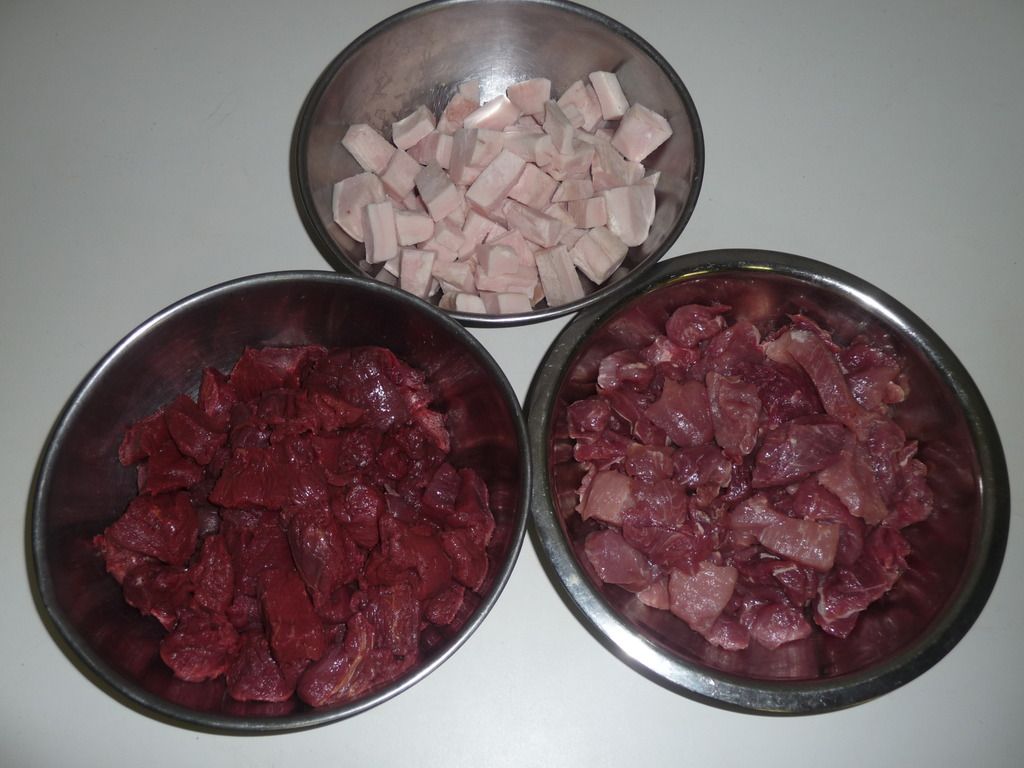
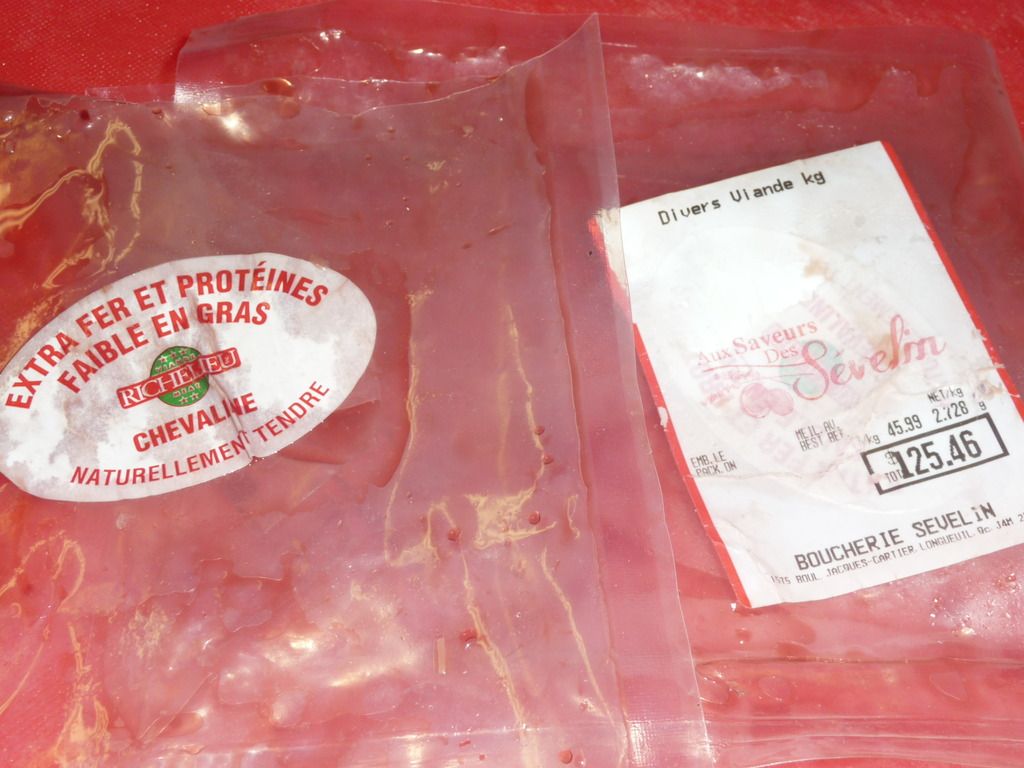
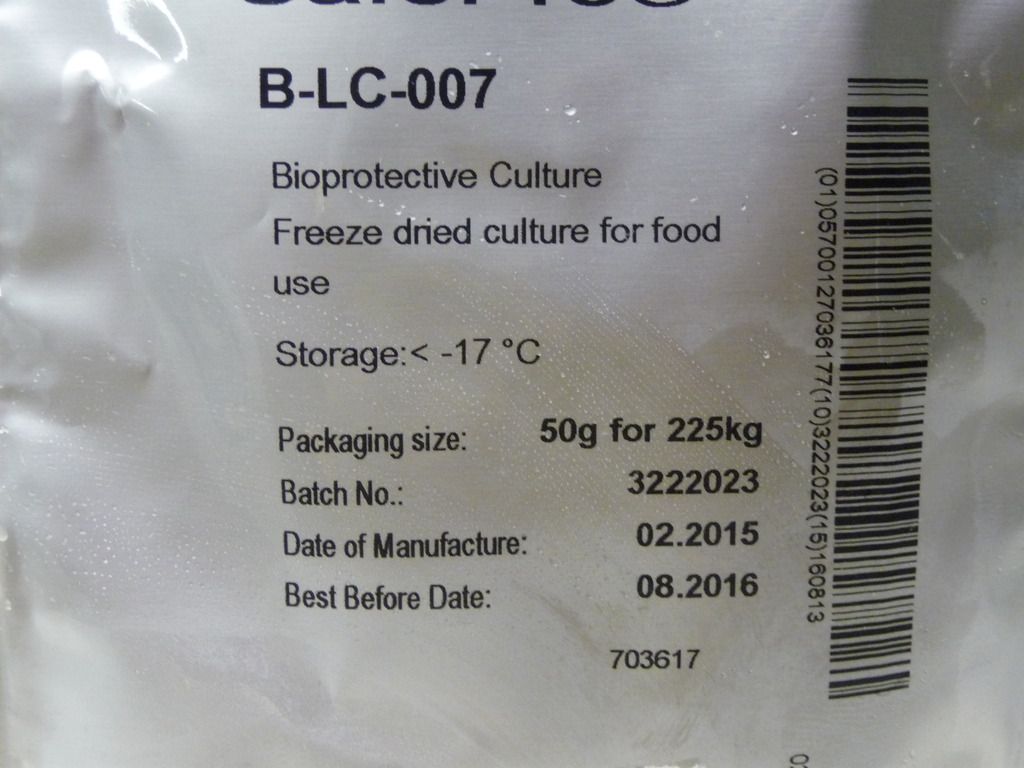
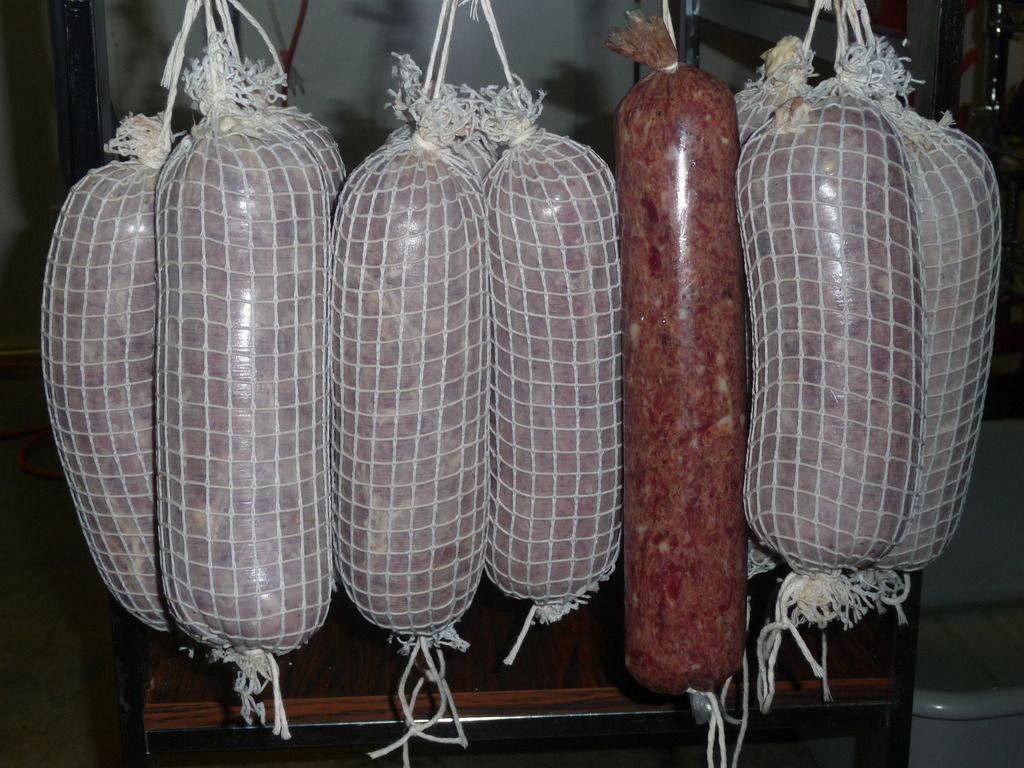
Saucisson sec de cheval
Meats
Horse meat, class I (no fat or connective tissue) 500g
Lean pork, class I, (no fat or connective tissue) 300g
Back Fat, 200g
Ingredients per 1000g (1 kg) of meat
Salt 22g
Cure #2 3g
Granulated garlic 4g
Mixed peppercorns, coarsely ground 5g
Hot chili powder 1g
Herbes de provence 1tsp
Mace .5 g
Brandy 1tsp
Dextrose 1g
Sucrose 1g
Erythorbate .5g
B-LC-007 - 3/4 tsp used for the 6kg meat block
Instructions
1. Cut horse and pork meat into 3-4cm. cubes, fat into slightly smaller ones.
2. Add the salt, #2 and erythorbate to the horse and pork meat (may be combined at this statge) and cure in fridge for 48 hours. Add salt to the fat and also place in fridge. Make sure that the meat and fat are covered well.
3. Freeze the fat and semi-freeze meat before grinding. Run the fat though the 7mm. plate and the meat through the 12mm.
4. Add the rest of the ingredients to the ground meat and mix throughly.
5. Stuff into beef middles and tie with string or net.
6. Ferment at 20-22C and 90+RH until pH reads 5.2 or lower. (Mine unfortunately dropped faster than expected and after 36 hours was at 4.83)
7. Dry at 75-85% RH until weight drops by 35-40%
8. Surface starter optional.
We hear that often but very few people, given the opportunity, would actually eat horse meat, even if they were seriously hungry! I really have no qualms about eating horse meat but have eaten it only a few times in my lengthy carnivorous life time. Many decades ago when I spent a year in Europe on an exchange scholarship, I had steak tartare at a restaurant made from horse meat filet. The waiter explained that it was as close to the original as possible since it was invented by the Tartars who not only rode horses but also ate them. Vodka flowed freely that night so I don't remember the taste. Then, somewhere along the way, I also had an Italian horse meat stew and three years ago my father made a Polish sausage for a friend that was 50/50 horse and pork. It was fabulous! But what has made the greatest impression, and has continually simmered in the back of my mind for the past decade is a saucisson sec de cheval that I tasted in French Catalonia. There was outdoor market in each town and village once a week and vendors would travel back and forth with their products. The butchers operated out of refrigerated trucks and there were always several varieties of dried sausages available, including those made from horses and donkeys. At the time I was not interested in making dry sausages and knew nothing about the process. But I was beginning to appreciate and like the Southern European dry cured sausages and found the idea of horse dried horse sausage quite intriguing. And finally now I got around to making my own version of saucisson sec de cheval .
A couple of weeks ago I sourced some horse meat from Montreal, paying double what an expensive cut of beef would cost. Actually the cost shocked me, so I hope it's worth the effort. The saucisson contains 50% horse meat from the loin and rump, 30% lean Class I pork (no connective tissue or fat) from the ham and butt, and 20% back fat. And there is another first here for me since I used Safepro® B-LC-007. Chr. Hansen markets this starter culture as the bacteria "with the license to kill", as it is apparently effective in eliminating listeria. I made a total of 6kg, all but one cased in beef middles. The saucisson has now finished the fermentation stage and is currently in my curing chamber. One chub was cased in the Umai 50mm salami tube and hung in my utility fridge.




Saucisson sec de cheval
Meats
Horse meat, class I (no fat or connective tissue) 500g
Lean pork, class I, (no fat or connective tissue) 300g
Back Fat, 200g
Ingredients per 1000g (1 kg) of meat
Salt 22g
Cure #2 3g
Granulated garlic 4g
Mixed peppercorns, coarsely ground 5g
Hot chili powder 1g
Herbes de provence 1tsp
Mace .5 g
Brandy 1tsp
Dextrose 1g
Sucrose 1g
Erythorbate .5g
B-LC-007 - 3/4 tsp used for the 6kg meat block
Instructions
1. Cut horse and pork meat into 3-4cm. cubes, fat into slightly smaller ones.
2. Add the salt, #2 and erythorbate to the horse and pork meat (may be combined at this statge) and cure in fridge for 48 hours. Add salt to the fat and also place in fridge. Make sure that the meat and fat are covered well.
3. Freeze the fat and semi-freeze meat before grinding. Run the fat though the 7mm. plate and the meat through the 12mm.
4. Add the rest of the ingredients to the ground meat and mix throughly.
5. Stuff into beef middles and tie with string or net.
6. Ferment at 20-22C and 90+RH until pH reads 5.2 or lower. (Mine unfortunately dropped faster than expected and after 36 hours was at 4.83)
7. Dry at 75-85% RH until weight drops by 35-40%
8. Surface starter optional.
